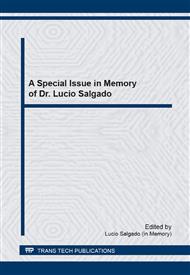p.598
p.604
p.609
p.615
p.621
p.627
p.632
p.641
p.646
Microstructural Evolution of Alumina-Zirconia Nanocomposites
Abstract:
Ceramic materials have limited use due to their brittleness. The inclusion of nanosized particles in a ceramic matrix, which are called nanocomposites, and ceramic processing control by controlling the grain size and densification can aid in obtaining ceramic products of greater strength and toughness. Studies showed that the zirconia nanoinclusions in the matrix of alumina favor an increase in mechanical properties by inhibiting the grain growth of the matrix and not by the mechanism of the transformation toughening phase of zirconia. In this work, the microstructural evolution of alumina nanocomposites containing 15% by volume of nanometric zirconia was studied. From the results it was possible to understand the sintering process of these nanocomposites.
Info:
Periodical:
Pages:
621-626
Citation:
Online since:
September 2014
Keywords:
Price:
Сopyright:
© 2015 Trans Tech Publications Ltd. All Rights Reserved
Share:
Citation:


